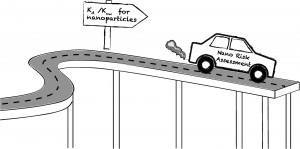This perspective, by Antonia Praetorius from ETH Zurich et al analyses the danger of using partition coefficients for the risk assessment of nanoparticles.
Adequate fate descriptors are crucial to predict the behaviour and transport of a contaminant in the environment and determining environmental concentrations for risk assessment. The authors of this perspective argue that the application of equilibrium partition coefficients in the context of engineered nanoparticle (ENP) fate assessment, although frequently suggested, lacks scientific justification.
Theories underlying partitioning behaviour and colloidal science are well established concepts and demonstrate that when it comes to ENPs, the use of partition coefficients could be inappropriate. In environmental media, ENPs form thermodynamically unstable dispersions as opposed to solutions. Therefore, Praetorius et al suggest that the use of any coefficient based on equilibrium partitioning is inadequate for ENPs and can lead to significant errors in ENP fate predictions and risk assessment.
Have you done research involving the use of equilibrium partition coefficients for nanoparticles? Read the full perspective now for free* and submit your comments below.
The road to nowhere: Equilibrium partition coefficients for nanoparticles
Antonia Praetorius, Nathalie Tufenkji, Kai-Uwe Goss, Martin Scheringer, Frank von der Kammer and Menachem Elimelech
DOI: 10.1039/C4EN00043A
The question remains, what are the best ‘global descriptors’ when it comes to describing ENP behaviour?
*Access is free through a registered RSC account – click here to register











